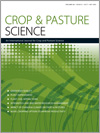The aim of this study was to evaluate the effects of shading on structural characteristics and herbage accumulation of palisade grass (Brachiaria brizantha cv. Piatã), in a crop–livestock–forest integration area. Three shade regimes were evaluated: no shade (NS), moderate shade (MS, 338 trees ha–1), and intense shade (IS, 714 trees ha–1). The effects of shade regime on soil-water content and nitrogen nutrition index were also evaluated. Grazing management was established based on sward light interception targets (95% LI pre-gazing). The MS and IS regimes were divided into two shade strips (central and lateral) in order to describe the variation in light availability within the paddocks. Two methods for taking the reference readings of LI were tested in IS paddocks: LI reading inside (under the tree canopy) and outside (under full sunlight) the experimental area. Increased tree density reduced photosynthetically active radiation on lateral and central shade strips by 37% and 12% for MS, and 52% and 50% for IS, respectively. For NS, MS, IS (outside) and IS (inside), grazing intervals were 23, 26, 28 and 35 days, pre-grazing heights corresponded to 33, 35, 43 and 52 cm, and pre-grazing herbage mass to 5.37, 4.44, 2.96 and 3.23 t ha–1, respectively. Leaf percentage remained relatively stable across shade regimes, but stem percentage was greater and dead material percentage was smaller for IS than for NS and MS. Soil water content was lower near the trees, especially during the dry season. Relative to NS, herbage accumulation decreased by 39% and 68% for MS and IS, respectively. Under natural shade, small variations in light availability affect sward structure and herbage production. The use of the 95% LI target developed under full sunlight conditions is not suitable for use under trees, emphasising the need to generate specific grazing-management targets for pastures cultivated under trees.
How to translate text using browser tools
24 October 2017
Sward structural characteristics and herbage accumulation of Piatã palisade grass (Brachiaria brizantha) in a crop–livestock–forest integration area
Steben Crestani,
Jorge Daniel Caballero Mascheroni,
Eliana Vera Geremia,
Roberta Aparecida Carnevalli,
Gerson Barreto Mourão,
Sila Carneiro Da Silva
ACCESS THE FULL ARTICLE

Crop and Pasture Science
Vol. 68 • No. 9
November 2017
Vol. 68 • No. 9
November 2017
Agroforestry
field grown
fluctuating light
forage yield
moisture stress
tropical grass





